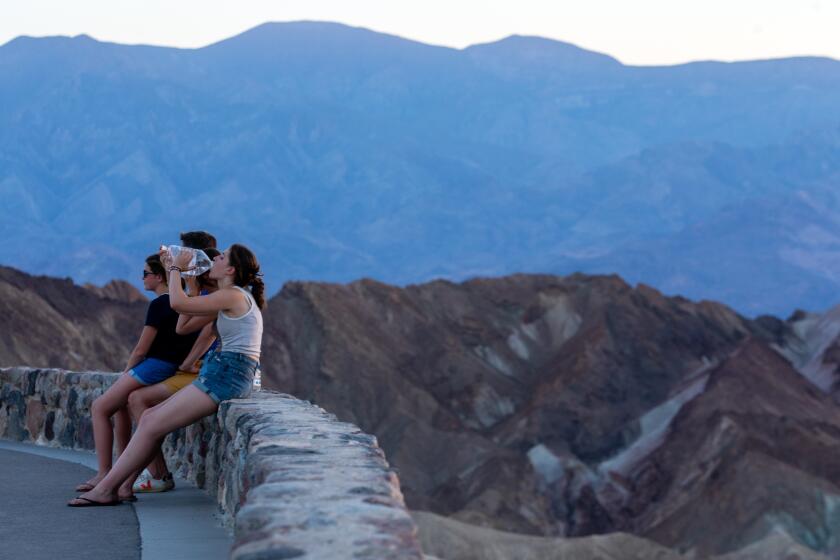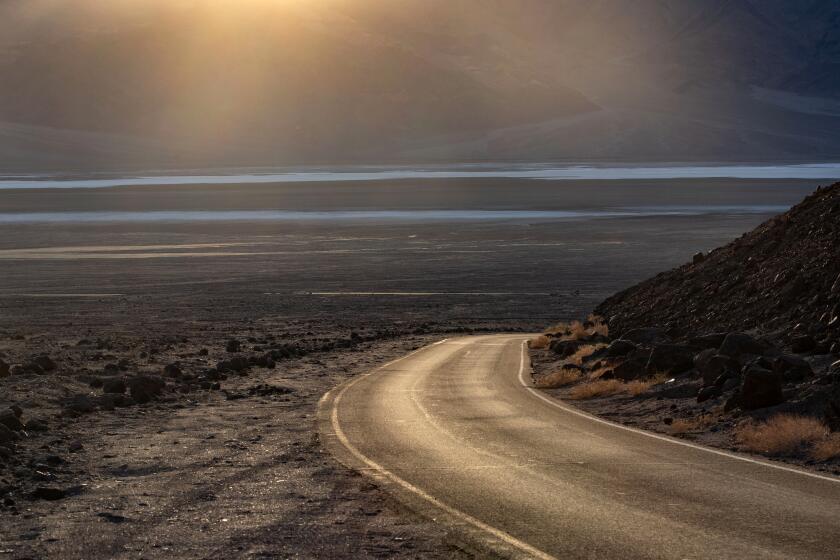He lived to be outdoors, even in extremes like Death Valley. He died doing what he loved
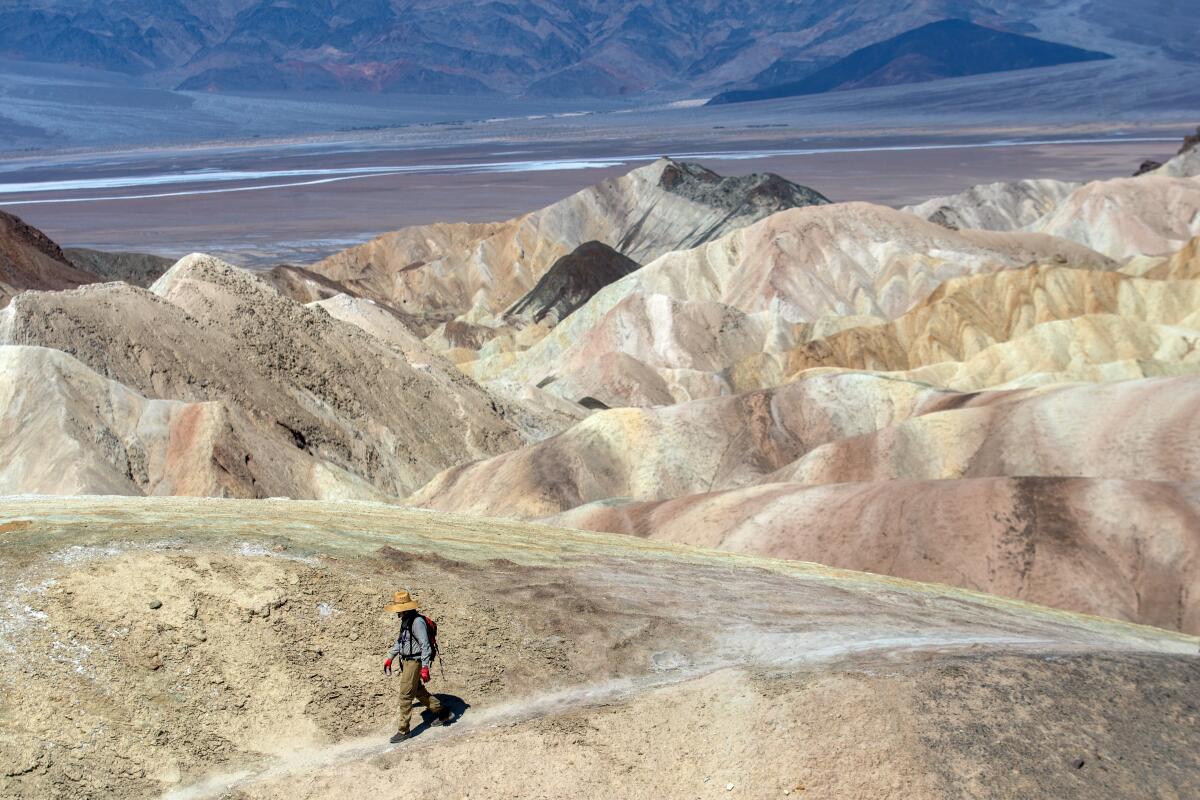
- Share via
Steve Curry lived for adventure. The 71-year-old Sunland resident loved nothing more than to hike, climb and spend time outdoors — so much so that he sometimes set up a tent in his own backyard.
But on Tuesday, Curry collapsed after completing a hike in Death Valley, one of the hottest places on the planet, and died of what officials believe were heat-related causes.
“He went having accomplished something he wanted to do,” said Rima Evans Curry, his wife of 29 years. “He wanted to go to Death Valley. He wanted to do a hike.”
The temperature in the park Tuesday was unbearably hot, but Curry was intent on completing his round trip from Golden Canyon to Zabriskie Point, a scenic overview overlooking the sun-drenched moonscape.
Around 10 a.m., Curry stopped to rest under a metal sign, the only spot of shade at Zabriskie Point. He declined offers of assistance, determined to finish what he set out to do. It had taken him about two hours to reach Zabriskie Point — and the return hike would take longer — but he said he was mostly worried that he wasn’t keeping pace with younger people he had seen out walking.
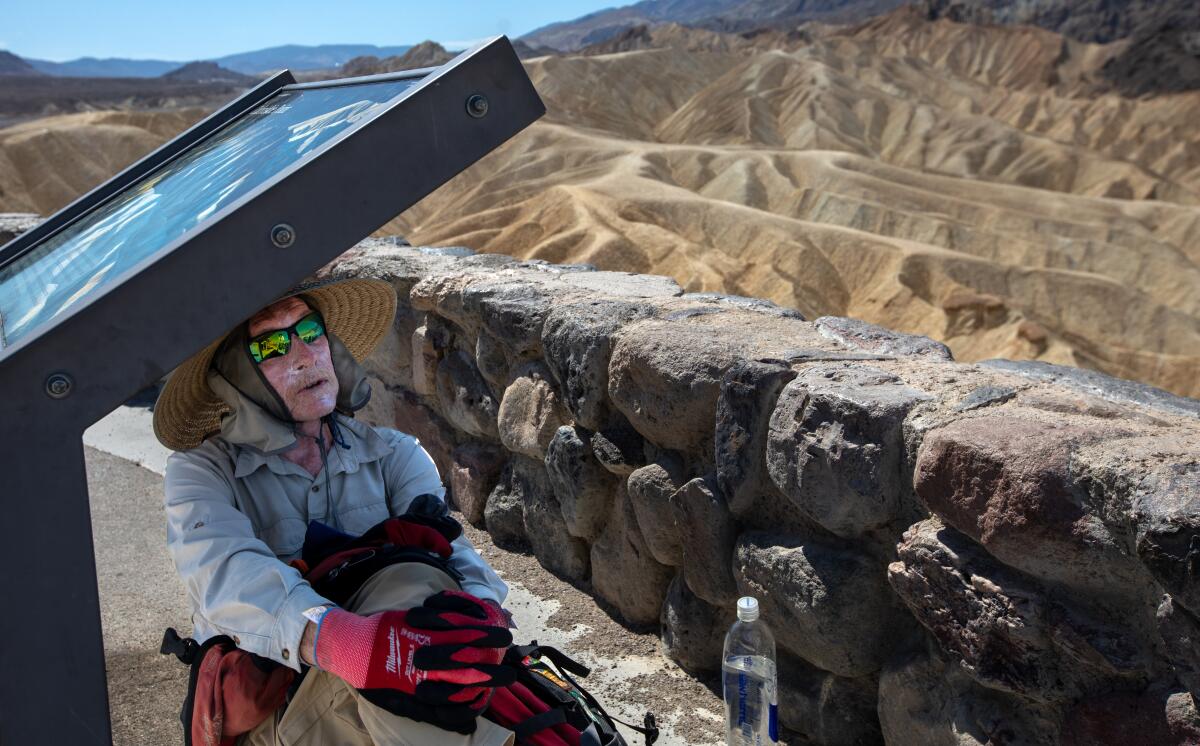
“He had talked about Death Valley for at least a week or more,” his 76-year-old wife said. She told him she was worried about the temperature. “But once he got an idea like that ...” she trailed off.
Curry collapsed outside the restroom at Golden Canyon around 3:40 p.m., and a park visitor used a cellphone to call 911. Officials with the National Park Service and Inyo County Sheriff’s Office responded, but a medical helicopter was not able to respond because of the high temperature. Officials said hot air can be too thin for helicopters to get enough lift to get off the ground safely.
Death Valley, one of the most extreme places on the planet, is already seeing the impact of climate change, with summers even hotter than usual.
Park rangers attempted CPR and used a defibrillator but were not able to save him. The Inyo County Coroner’s Office has not yet determined Curry’s cause of death, but park rangers suspect heat was a factor. The thermometer at the nearby Furnace Creek Visitor’s Center registered 121 degrees around the time of his death, but the actual temperature inside the canyon was likely much higher because of the radiant heat from the sun, officials said.
Friends and family remembered Curry as happy-go-lucky, with a winning smile and a great sense of humor. Born in San Diego on Aug. 28, 1951, he spent his youth in several states, including Arizona and New Jersey, because his father was in the military, his wife said.
He worked for the Los Angeles Unified School District and as an electrician before retiring about a decade ago.

After the Currys got married in 1994, he “got this bug” for the outdoors, his wife said. He bought camping gear, joined a rock climbing group and completed wilderness training courses. When he couldn’t travel out of town, he’d climb Mt. Lukens in Sunland-Tujunga just to get a taste of adventure.
“He was always happiest when he could be out there sleeping under the stars,” she said. “That was his joy.”
Though Evans Curry didn’t love the outdoors as much as her husband, she accompanied him on a few camping trips in Three Rivers, Panamint City and the Four Jeffrey Campground in Inyo National Forest.
A man was found dead in his car from apparent heat-related illness Monday in Death Valley National Park, according to authorities said.
He didn’t tell her he was heading to Death Valley on Monday, and she was expecting him back that night.
When he didn’t return, “I thought, ‘That rascal. He just took off because he knows it’s hard for me to let him go,’” she said Thursday, fighting back tears.
“We were supposed to grow old together, sit on our rocking chairs on the porch.”
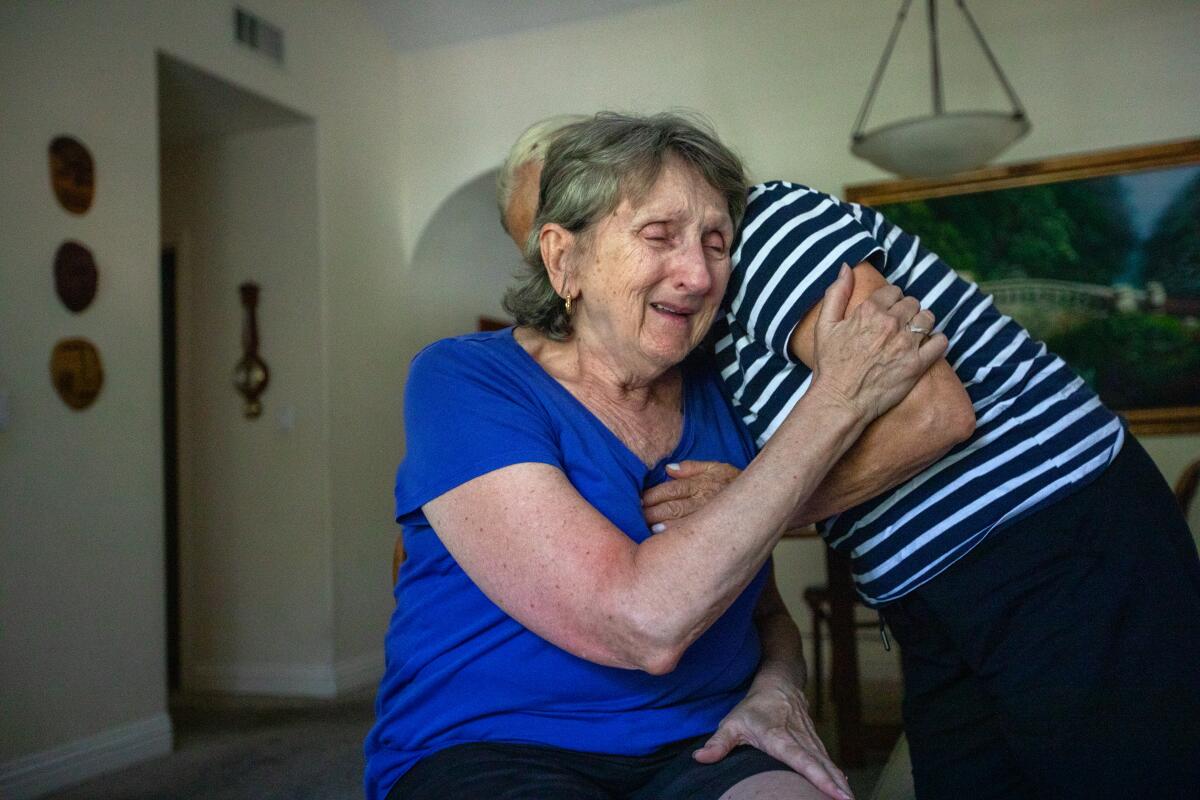
Curry’s death was the second officials have reported in the park this year. On the morning of July 3, a 65-year-old man was found dead in his car about 30 yards off the road from North Highway. The temperature the previous day had been 126 degrees, and park officials said the air conditioning in the man’s car wasn’t working.
Death Valley, which holds the world record for Earth’s highest temperature — 134 degrees — has been experiencing blistering conditions as a heat wave bakes the Southwest. The park has already recorded 29 days of temperatures in excess of 110 degrees this year.
The park service advises visitors against hiking after 10 a.m. during periods of extreme summer heat. Heat stroke can set in when the body’s core temperature rises above 104 degrees, and can lead to headaches, dizziness, weakness, nausea, confusion, rapid heartbeat and unconsciousness, among other problems.
Children, the elderly and people who are pregnant are particularly vulnerable to extreme heat, although anyone can be affected.
At Zabriskie Point on Tuesday morning, Curry said he was no stranger to hot weather, but he acknowledged that the climate in Death Valley was “a different sort of heat,” with its dryness and the way it warms everything it touches.
When asked why he was attempting the hike, the avid outdoorsman hardly paused before answering.
“Why do I do it?” he asked. “Why not?”
More to Read
Sign up for Essential California
The most important California stories and recommendations in your inbox every morning.
You may occasionally receive promotional content from the Los Angeles Times.
